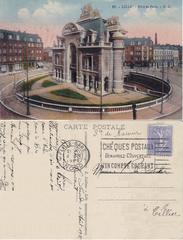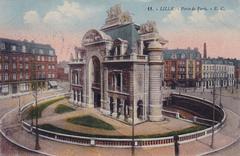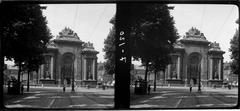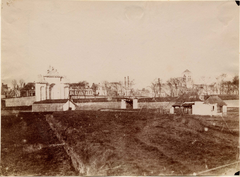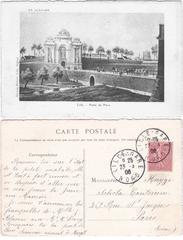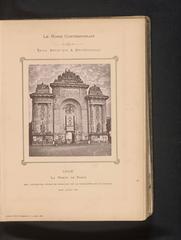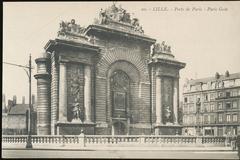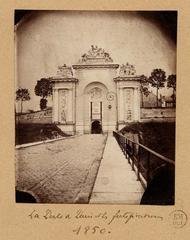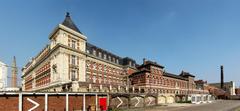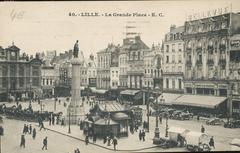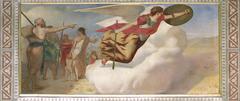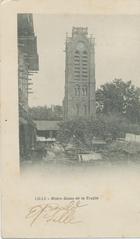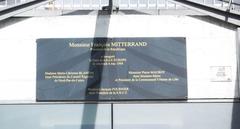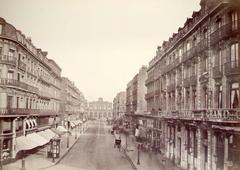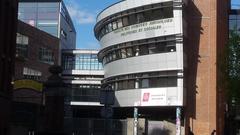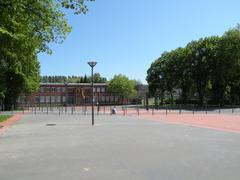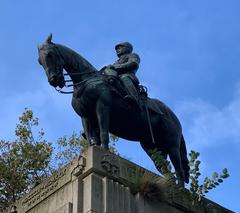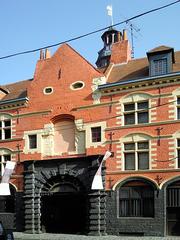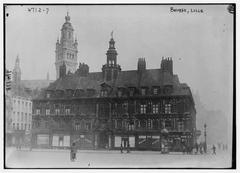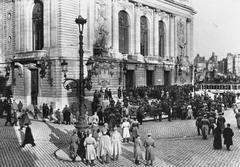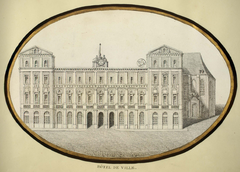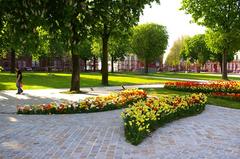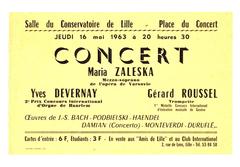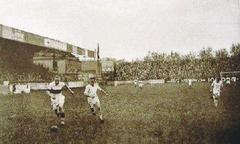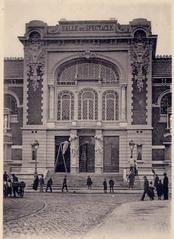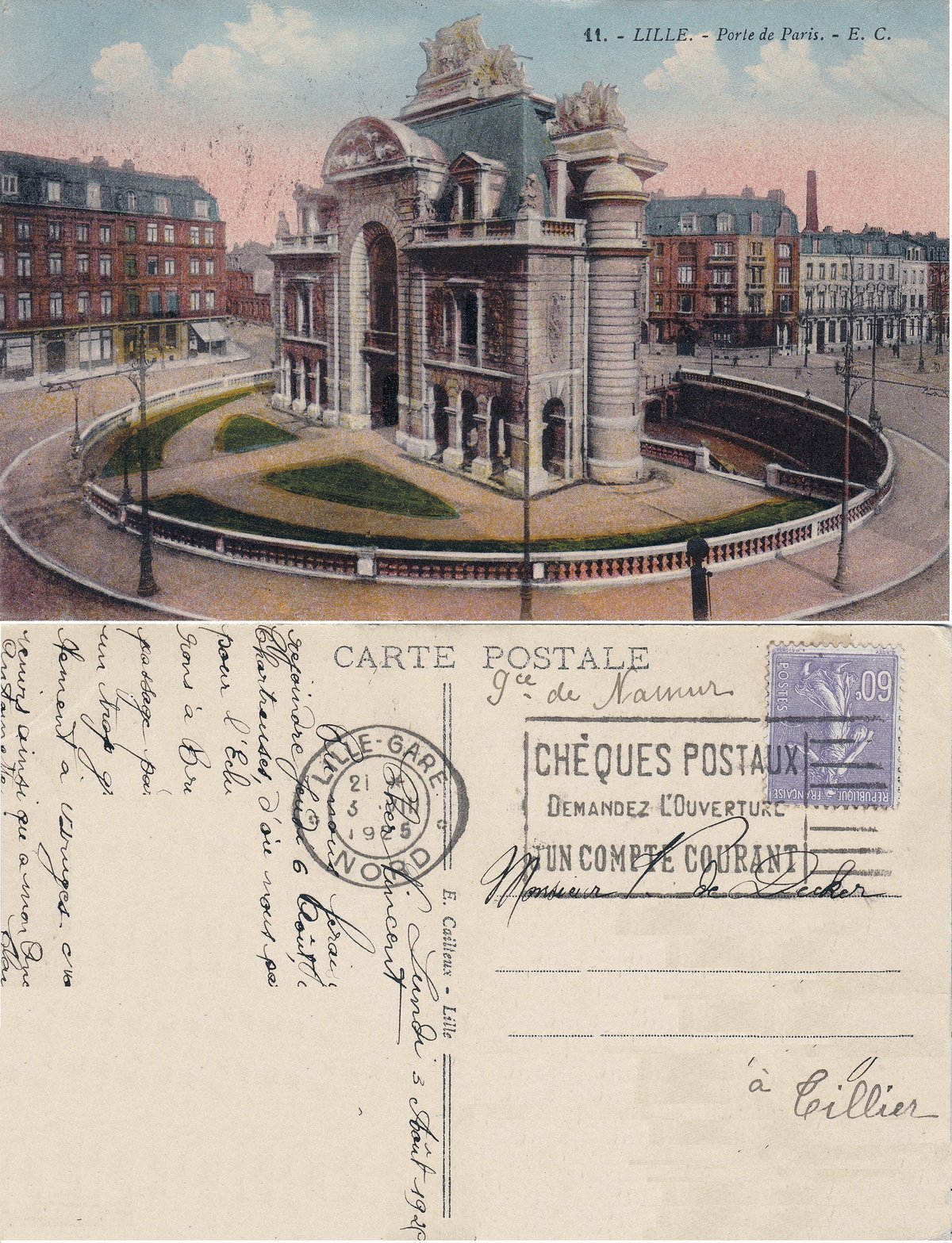
Visiting Porte de Paris in Lille: Hours, Tickets, and Historical Sites
Date: 18/07/2024
Introduction
This guide aims to provide visitors with a comprehensive overview of the Porte de Paris, including its historical significance, visitor information, and nearby attractions. Whether you’re planning your first visit or you’re a history enthusiast looking to delve deeper into Lille’s past, this guide will equip you with all the necessary information for a memorable experience.
Table of Contents
- [History and Significance](#history-and-significancehistory-and-significance)
- [From Fortress to Symbol of Victory](#from-fortress-to-symbol-of-victoryfrom-fortress-to-symbol-of-victory)
- [Enduring Change and Transformation](#enduring-change-and-transformationenduring-change-and-transformation)
- [Visitor Information](#visitor-informationvisitor-information)
- [Visiting Hours](#visiting-hoursvisiting-hours)
- [Ticket Prices](#ticket-pricesticket-prices)
- [Accessibility](#accessibilityaccessibility)
- [Experiencing the Porte de Paris](#experiencing-the-porte-de-parisexperiencing-the-porte-de-paris)
- [Admire the Architecture](#admire-the-architectureadmire-the-architecture)
- [Photography Tips](#photography-tipsphotography-tips)
- [Explore the Surroundings](#explore-the-surroundingsexplore-the-surroundings)
- [Guided Tours](#guided-toursguided-tours)
- [Nearby Attractions](#nearby-attractionsnearby-attractions)
- [Palais des Beaux-Arts](#palais-des-beaux-artspalais-des-beaux-arts)
- [Vieille Bourse](#vieille-boursevieille-bourse)
- [Lille Cathedral](#lille-cathedrallille-cathedral)
- [Citadel of Lille](#citadel-of-lillecitadel-of-lille)
- [FAQ](#faqfaq)
- [Conclusion](#conclusionconclusion)
- [Call to Action](#call-to-actioncall-to-action)
- [References](#referencesreferences)
History and Significance
From Fortress to Symbol of Victory
The Porte de Paris’s story begins in the 17th century. Built between 1685 and 1692, it served as a grand entrance to the city, replacing an older medieval gate. This period marked a time of significant expansion for Lille under the reign of Louis XIV, the Sun King. The famed military engineer, Sébastien Le Prestre de Vauban, played a crucial role in fortifying the city, and the Porte de Paris became an integral part of his defensive masterplan.
The gate’s design reflects its dual purpose - a symbol of power and a defensive stronghold. Its imposing structure, crafted from white stone, features classical architectural elements, including Doric columns, a triumphal arch, and intricate carvings. These decorative elements depict scenes of military victories, particularly celebrating Louis XIV’s triumph in the siege of Lille in 1708. This victory cemented the gate’s status as a symbol of French military prowess.
Enduring Change and Transformation
Over the centuries, the Porte de Paris witnessed Lille’s transformation. As the city grew beyond its fortified walls, the gate lost its defensive significance. However, its symbolic importance remained undiminished. In the 19th century, during the reign of Napoleon III, the gate underwent renovations to accommodate the increasing traffic flow. These modifications, while necessary for the city’s development, also highlighted the evolving role of the gate from a military structure to a historical landmark.
Visitor Information
Visiting Hours
The Porte de Paris is accessible to visitors at all times of the day. However, for the best experience, it is recommended to visit during daylight hours to fully appreciate its architectural details and surrounding views.
Ticket Prices
There is no admission fee to visit the Porte de Paris. It is an open public space that can be enjoyed freely by all.
Accessibility
The Porte de Paris is located in a central and easily accessible area of Lille. The site is pedestrian-friendly and can be reached by various modes of public transport, including buses and trams. Additionally, the surrounding area is equipped with ramps and pathways suitable for visitors with mobility needs.
Experiencing the Porte de Paris
Admire the Architecture
Take time to appreciate the intricate details of the gate’s design. The Doric columns, the triumphal arch, and the carvings depicting military scenes all tell a story of Lille’s past.
Photography Tips
The Porte de Paris provides a stunning backdrop for photographs. Capture its grandeur from different angles, and don’t miss the opportunity to capture the intricate details of its carvings.
Explore the Surroundings
The gate is located in a vibrant area of Lille. Take a stroll around the neighborhood, explore the nearby shops and restaurants, and soak up the atmosphere of this historic part of the city.
Guided Tours
Consider joining a guided tour to delve deeper into the history of the Porte de Paris and its significance in Lille’s story.
Nearby Attractions
While visiting the Porte de Paris, consider exploring other historical sites and attractions in Lille:
Palais des Beaux-Arts
One of the largest museums in France, housing a vast collection of fine arts.
Vieille Bourse
A beautiful example of 17th-century Flemish architecture, formerly a stock exchange and now a hub for book markets and cultural events.
Lille Cathedral
A breathtaking Gothic Revival cathedral located in the heart of the city.
Citadel of Lille
Another of Vauban’s masterpieces, this star-shaped fortress is surrounded by a lush park perfect for leisurely walks.
FAQ
Q: What are the visiting hours for the Porte de Paris?
A: The Porte de Paris is accessible at all times, although visiting during daylight hours is recommended.
Q: Is there an admission fee to visit the Porte de Paris?
A: No, there is no admission fee. It is open to the public for free.
Q: How can I reach the Porte de Paris?
A: The site is easily accessible by public transport, including buses and trams. It is also pedestrian-friendly.
Conclusion
The Porte de Paris is more than just a historical relic; it’s a living testament to Lille’s enduring spirit. Its presence serves as a constant reminder of the city’s rich past, its resilience in the face of adversity, and its evolution into the vibrant metropolis it is today. A visit to this iconic landmark is an essential part of experiencing the true essence of Lille. Don’t forget to explore nearby attractions and make the most of your visit!
